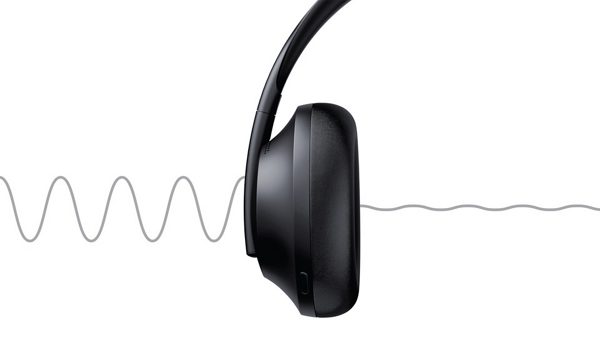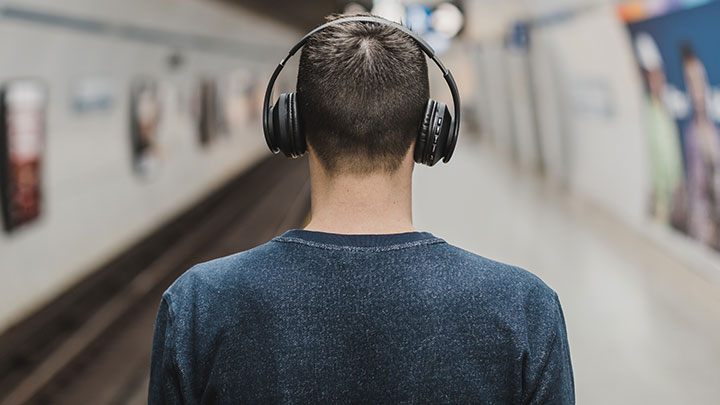Whether in a car, a plane, a subway, or on a crowded street, noise-canceling headphones block out practically all the sounds around you. Bringing peace and quiet to your ears. Despite their widespread use in daily life, many people do not know how they actually work.
This article aims to break down the what, how, and why behind noise-canceling headphones. From exploring its origins to explaining the underlying science involved, we explore the noise-reduction technology that helps create a quieter environment for our listening experience.
In This Article
- How Active Noise Cancellation Works
- Explanation of Sound Waves
- Different Types of Noise: Ambient vs Active
- What’s the Difference Between Passive and Active Noise Canceling Headphones?
How Active Noise Cancellation Works
Noise-canceling headphones, now a common sight, have a rich history dating back to 1978. The inception of this concept can be traced back to Amar Bose and a frustrating experience on a flight from Zurich to Boston. Despite having electronic headsets, the noise from the airplane engine overwhelmed the music, leading to a less-than-optimal listening experience.
If the name Dr. Amar Bose rings a bell, it’s because he’s the founder of Bose Audio, a brand now synonymous with top-notch noise-canceling headphones. But transforming this concept into a tangible product took years of persistent effort and significant financial investment.
The idea Bose conceived during his flight was straightforward: create headphones that could “listen” to ambient noise. However, turning this simple idea into reality was challenging. It wasn’t until 1986, nearly a decade after his inspiring flight, that Bose developed a functional prototype.
Initially, these noise-canceling headphones found their application in specific sectors, serving airline pilots and military personnel. They were also offered to first- and business-class passengers aboard American Airlines. As manufacturing costs gradually decreased, these headphones became accessible to the broader public.
There are many noise-canceling headphones in the market, but popular picks include the Sony WH-1000XM5, Bose QuietComfort 35 II and Apple AirPods Pro.
So, while you enjoy your music through the speakers of these headphones, remember that they’re also “listening” to the surrounding noise to provide you with an enhanced auditory experience.
Explanation of Sound Waves
Every sound we hear moves in the form of a wave, known as a sound wave, and no two sound waves are identical. When two different sounds are played simultaneously, they combine in a process known as constructive interference. This process amplifies the combined sound, making it louder — think of the increasing volume in a restaurant as more people arrive and engage in conversations.
But what if the combination of sounds led to a quieter, even near-silent result instead of a louder one? This phenomenon, called destructive interference, is the principle at the heart of how noise-canceling headphones work.

Sound waves, much like light waves, consist of peaks and valleys. Noise-canceling headphones are equipped with a built-in microphone that detects these sound waves. Upon detection, the headphones emit a new waveform, the exact opposite of the incoming sound wave. This means each peak is met with a valley and each valley with a peak.
The outcome of this process is the “canceling” in noise-canceling. The opposing sound waves neutralize each other, resulting in a flat line and, consequently, a serene silence.
Different Types of Noise: Ambient vs Active
If you’ve had the experience of using noise-canceling headphones, you may have noticed that they don’t completely silence all surrounding noise. You might still be able to hear loud conversations or the honking of car horns. This is because noise-canceling technology is most effective in environments with consistent ambient sound. This makes these headphones particularly useful in settings like airplane cabins or train carriages.
When faced with active variable noise, the technology can sometimes struggle to accurately mirror and cancel out the sound waves. It’s akin to playing a game of whack-a-mole because the headphones can only nullify a certain number of sounds at a time.
The effectiveness of noise cancellation also varies between different headphones. For instance, a $50 pair may deliver a lower level of noise reduction than a $300 set. Still, it might be sufficient depending on your specific requirements.
Even though noise-canceling headphones may not provide absolute silence in all situations, they have undoubtedly proven to be a valuable tool in helping individuals navigate their daily routines or commutes.
What’s the Difference Between Passive and Active Noise Canceling Headphones?
Noise-canceling and ANC (active noise cancellation) headphones are often used interchangeably, but there’s a fundamental difference between the two. In a broader sense, noise-canceling headphones are noise-isolating headphones that reduce unwanted ambient sounds through physical insulation. This is often called passive noise cancellation. The design and materials of the headphones play a critical role in this.
Over-ear designs that fully encompass your ears or in-ear designs that seal off the ear canal are common forms of passive noise cancellation. The headphones create a physical barrier that blocks high-frequency noise, like people talking nearby or typing on a keyboard.
On the other hand, active noise-canceling (ANC) headphones use advanced electronics to cancel out unwanted noise, especially lower-frequency sounds like the hum of an air conditioner or the drone of an airplane engine. In addition to the physical barrier provided by the headphone design, ANC headphones use built-in microphones to listen to the ambient sound around you.
The electronics in the headphones then create a sound wave that is the exact opposite (or “inverse”) of the ambient sound. When these two waves meet, they cancel each other out, eliminating unwanted noise.
This is why it’s called active noise cancellation because it requires power (usually in the form of a rechargeable battery) to operate the noise cancellation circuitry. While all active noise-canceling headphones provide noise cancellation, not all noise-canceling headphones use ANC technology.
Which is Better, Active or Passive Noise Cancellation?
The choice between active and passive noise cancellation hinges on personal requirements and the intended use of the headphones.
For most users, active noise-canceling headphones offer a superior experience, primarily because they enhance the ability to enjoy music at lower volumes. This technology excels in suppressing external noise, making these headphones ideal for commuters, travelers, and individuals working in noisy office spaces. However, active noise cancellation comes with its own set of drawbacks. The most significant is a potential compromise in sound quality when the noise cancellation feature is activated.
Active noise-canceling headphones operate by producing counter frequencies (antiphases) to neutralize ambient noise. While effective, this process introduces additional sound elements that can degrade the overall audio quality. As a result, professionals such as DJs, who operate in noisy environments but require undistorted sound, might opt for passive noise-canceling headphones that don’t interfere with the audio signal.
Fortunately, many active noise-canceling headphones come equipped with adjustable settings, allowing users to switch the noise-canceling feature on or off as per their environment and preference. For instance, in a quiet location, turning off the noise cancellation might improve sound quality.
Another important consideration is the physical effect of active noise cancellation on the user. This technology generates sound waves that exert pressure against the ears when activated. Although not painful, the sensation can be likened to the ear pressure changes experienced when driving through a tunnel or during the ascent phase of a flight. Some users may find this sensation uncomfortable, particularly during prolonged use of the headphones.

